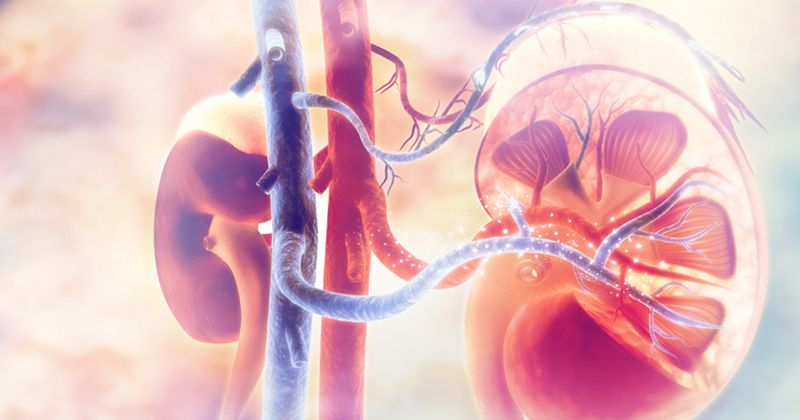‘Back to the future’: Speaker discusses need for innovation in dialysis
The goal of kidney replacement therapy must be helping patients to “live their lives as if they were free from disease to the extent possible,” according to a speaker at the virtual Innovations in Dialysis: Expediting Advances Symposium.
To do this, Jonathan Himmelfarb, MD, director of the Kidney Research Institute and co-director of the Center for Dialysis Innovation at the University of Washington, contended it is necessary to re-focus attention on rehabilitation and decreasing symptom burden, as was the established goal in the 1960s.

“In a sense, this is going back to the future” Himmelfarb told the audience. “The pioneers in the 1960s all believed the goal of treatment was make people feel well enough so that it was as if they didn’t have kidney disease.”
According to Himmelfarb, the specialty of dialysis changed in the 1970s as biochemical parameters — such as the measurement and removal of urea — became the primary gauge of dialysis adequacy.
Though the 1970s was also a decade of innovation in medical devices (such as Dean Kamen’s wearable insulin pump), Himmelfarb said this kind of device innovation lay relatively stagnant for an extended period of time.
He added that in 1963, 3 years after the first patient went on chronic hemodialysis, American physician and dialysis pioneer Belding Scribner argued that if the treatment of chronic uremia cannot fully rehabilitate the patient, then the treatment is inadequate.
“By those standards,” Himmelfarb said, “our treatments today are still inadequate.”
Despite the stagnation and inadequacy of treatments for patients with end-stage kidney disease, Himmelfarb suggested there was a resurgence of Scribner’s perspective in the 1990s and 2000s.
“We recognized that the amount of urea you removed had very little to do with how patients faired on dialysis,” he said. “We began questioning some of the assumptions that we made about biochemical measures being the be-all and end-all to measure how our patients were doing with dialysis.”
According to Himmelfarb, there is a disconnect between patients and health care professionals regarding what matters most to the patients. Recent data have suggested patients place symptom burden above hospitalization and mortality. In other words, he said, they want to “feel good.” Patients want to have more energy, greater mobility, improved mood and freedom from dialysis.
“Perhaps if we’re trying to improve dialysis, these are the kinds of symptoms we should be focusing on as opposed to biochemical parameters,” he argued, noting that one major barrier to achieving this is that the kidneys work 24/7 while dialysis is discontinuous.
“The primary function of healthy well-functioning kidneys is to maintain constancy,” Himmelfarb elaborated. “We’ve known for a long time that the closer you come to continuous therapy, the better patients feel. But with dialysis today, you end up trading burden of the disease for the burden of treatment.”
The solution he proposed is to develop portable and wearable forms of dialysis; some day he hopes that portable dialysis will be transformed even further into bioengineered and implantable kidneys.
Himmelfarb sees the current moment as one of optimism for the future of patients with kidney failure, as federal agencies are collaborating to accelerate innovation through public-private partnerships. He cited both the Advancing American Kidney Health initiative and the KidneyX Redesign Dialysis competition as evidence of a changing landscape where transformation in kidney care can occur.
In developing strategies for improved treatments, Himmelfarb said that in addition to federal agencies supporting changes through regulatory aspects, reimbursements and policy considerations, it is necessary for patients to have significant input.
“What we understand in this changing environment is that patients’ priorities count the most,” he argued. “We need bottom up efforts by patient advocates, researchers and innovators that are really going to change the future for patients with kidney failure.”
The challenges of innovations in dialysis are known, according to Himmelfarb, and include creating strategies to make it more affordable, more continuous and less detrimental to the environment (eg, using less water).
“I do believe that after decades of stagnation, change is underway and it’s very exciting,” he concluded. “There is growing momentum to support transformative innovation. Truly, it’s our collective community responsibility to make that change happen for the simple reason that our patients deserve better options. They deserve hope for the future.”

